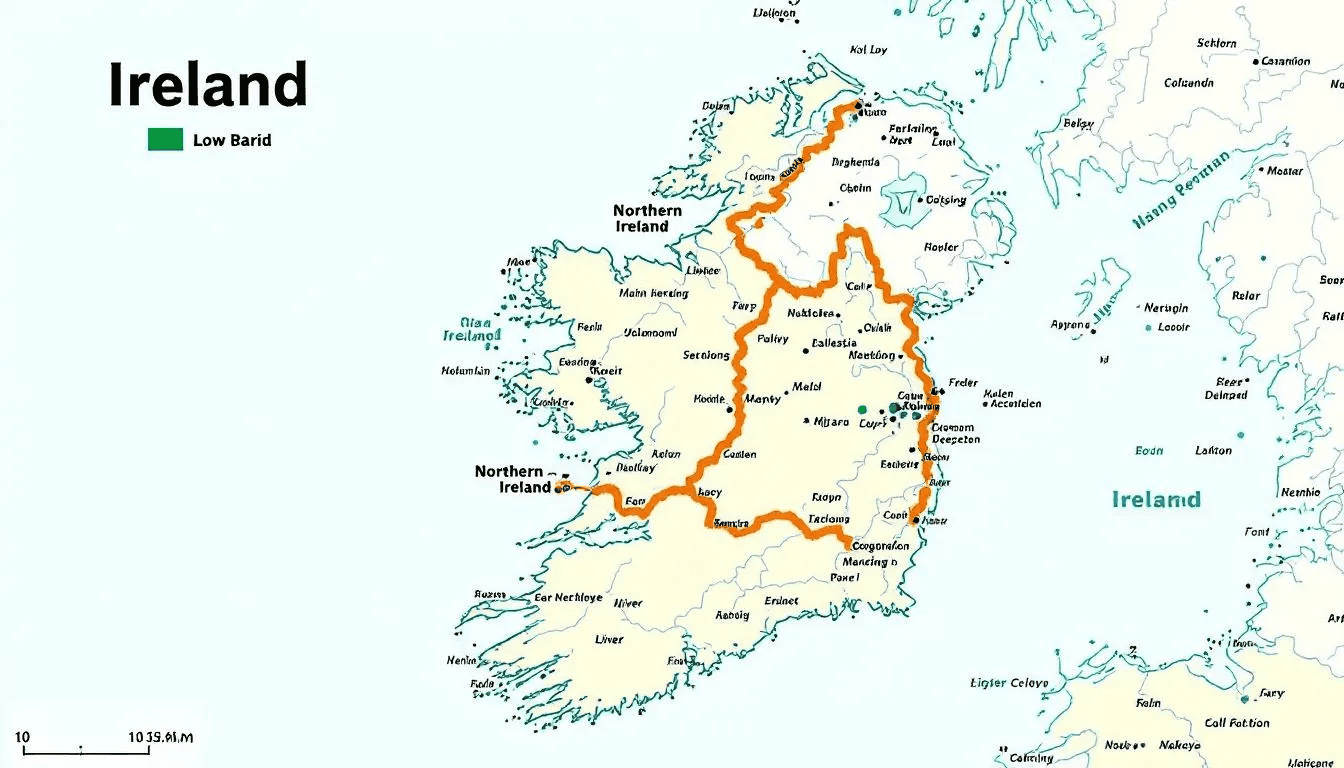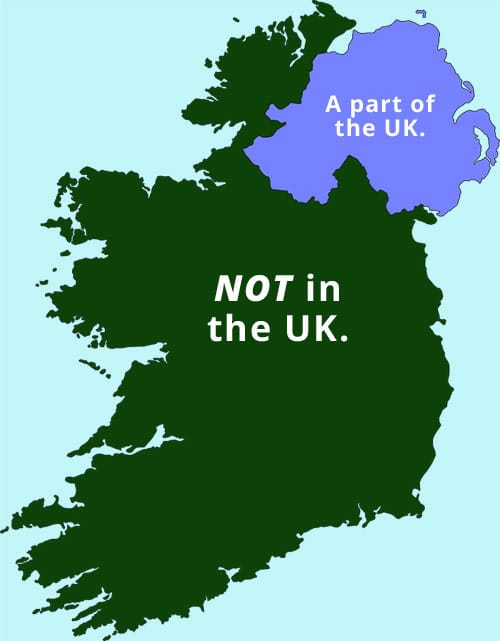Introduction to the British Isles
The British Isles is a geographical term that refers to a group of islands situated off the northwest coast of France. This collection includes the two largest islands—Great Britain and Ireland—as well as thousands of smaller islands such as the Isle of Man, the Hebrides, and the Channel Islands. It’s important to note that “British Isles” is a geographical term, not a political one. While the United Kingdom is a political entity made up of England, Scotland, Wales, and Northern Ireland, the British Isles encompasses both the island of Great Britain and the entire island of Ireland, which includes both the Republic of Ireland and Northern Ireland.
This distinction is crucial for understanding the region’s complex history and politics. Over the centuries, the British Isles have seen the rise and fall of various kingdoms and empires, most notably the British Empire, which left a lasting impact on the islands’ cultures, languages, and societies. The term “British Isles” can sometimes cause confusion or controversy, especially in Ireland, due to its association with British rule and the long history of political conflict between Ireland and Britain. Understanding the difference between geographical and political terms like “Great Britain,” “United Kingdom,” and “British Isles” helps clarify the unique identities and histories of the countries that share these islands.
A Guide to the Question Is Ireland Part Of the United Kingdom
This is a simple guide on whether Ireland is part of the UK or not. I wrote this post because the topic can be complicated for non-Irish people; it definitely took me a while to figure it out. To make matters worse, other articles on the subject seem to start off with long-winded history lessons. I’ll try to get to the point before getting into detail.
First, you have to understand that the island of Ireland is split into two different countries.
These are:
- The Republic of Ireland, which is a separate country and a sovereign country.
- Northern Ireland.
These are two separate countries. They both use different currencies, and they have different governments and legal systems. Northern Ireland uses the British pound as its official currency.

The map above illustrates how the island of Ireland is separated into two different countries.
The Republic of Ireland is NOT a part of the UK. It is an entirely independent nation with no sovereign ties with the UK, Great Britain or England. It is no longer under English rule.
However, Northern Ireland is a part of the UK.
So, just so we’re clear here:
- The Republic of Ireland is independent, not part of the United Kingdom.
- : A country that is a part of the United Kingdom.
Or, if you prefer a visual description:

A map showing which parts of Ireland are in the UK.
As you can see, only Northern Ireland is a part of the UK. The rest of the island of Ireland is completely independent. Although both countries share the same island, they have distinct political statuses.
Why are people confused by this?
The confusion stems from the fact that most people use the word “Ireland” to describe the Republic of Ireland. This is because “Ireland” is actually the official name of the state.
The “Republic of Ireland” is a legal description of the country. It is not an official name. This legal description was adopted in 1949, twelve years after the Irish constitution was ratified. This description is typically used when people want to avoid any ambiguity.
Dublin is the largest city in Ireland and serves as its capital.
Article 4 in the Constitution of Ireland states the following:
The name of the State is Éire, or, in the English language, Ireland.
Essentially, this means that “Ireland” is the official name of both the geographical island and the sovereign nation
Why doesn’t Ireland use the “Republic of Ireland” as its official name?
That’s fighting talk, my friend.
The history of Ireland and its partition into two separate countries is a complex one. Far too complex for me to explain in any detail.
However, let’s just say that the people of Ireland have always felt that the two countries should be reunited at some point. Whether that happens next week or three decades from now is a mute point. Many people feel as though the island of Ireland belongs to the Irish and that it was occupied by a foreign nation (Britain).
There is a large population of Irish people who were born in Northern Ireland. Although they grew up in the United Kingdom, they have Irish passports and they identify as being Irish. Among the people living in Northern Ireland, some identify strongly with a British identity, while others feel a strong Irish identity. The Catholic and Protestant communities have played a significant role in shaping these identities, with many Catholics supporting reunification with the south and many Protestants wishing to maintain ties with the UK. Many of these people would like to see Northern Ireland reunited with the independent Irish nation in the south.
The partition of Ireland in 1921 was extremely controversial. So controversial in fact that it caused a civil war. Giving up our claim to the name “Ireland” could have been interpreted as a sign that we were willing to accept this partition. That we were willing to abandon the many Irish people who lived in Northern Ireland.
When did Ireland leave the UK?
Ireland left the United Kingdom on the 6th of December, 1922 after it officially became the Irish Free State. At that point, Ireland became a self-governing dominion that was no longer a part of the UK. Northern Ireland was created as a separate entity in 1921 following the partition of the island. To mark this change, the UK later renamed itself as “the United Kingdom of Great Britain and Northern Ireland” in 1927.
Was Ireland ever a part of Great Britain?
No. Ireland has never been a part of Great Britain. Great Britain is a geographical term that refers to Scotland, Wales and England. Great Britain is an island that lies to the east of Ireland.
Although a sovereign state called the Kingdom of Great Britain existed between 1707 and 1801, Ireland was never a part of this kingdom. Instead, the Kingdom of Great Britain and the Kingdom of Ireland shared a legislative union, which was later formalized by the Act of Union 1800. The form of union prior to this act was a personal union, not a real union. A real union is where both states share the same governmental institutions. This was not the case between the Kingdom of Great Britain and the Kingdom of Ireland. In fact, the Kingdom of Ireland even had its own parliament.
The Kingdom of Ireland was a client state that England had brought under its control, largely through the imposition of English law on Irish lords and landowners.
How did Ireland become a part of the UK?
After the Irish rebellion of 1798 was quashed, Britain decided that it was time to tighten its grip on Ireland even further. Subsequently, the British government passed the 1800 Acts of Union. This disbanded the Parliament of Ireland and united the two kingdoms under the official name of the “United Kingdom of Great Britain and Ireland.”
A timeline of events.
A quick timeline of events:
- 1169: The Anglo-Norman invasion of Ireland takes place.
- 1177: King Henry II declares his son as the Lord of Ireland.
- 1536: Henry VIII of England decides to reconquer Ireland after English influence dwindles on the island.
- 1541: Henry VIII upgrades Ireland from a lordship to the Kingdom of Ireland. He also declares himself as the King of Ireland.
- 1606: The Ulster Plantation begins. English forces confiscate Irish land and give it to British and Scottish settlers, displacing many native Irish from their ancestral lands.
- 1798: The Irish Rebellion of 1798 is bloodily suppressed. During these wars, Spain provided support to Irish rebels in their fight against British rule.
- 1801: The United Kingdom of Great Britain (the larger island in the British Isles) and Ireland is formed. Law is used to enforce the union and control land ownership, further consolidating British authority.
- 1840s: The Great Famine devastates Ireland’s population, with over a million deaths and mass emigration, causing long-term demographic changes and deepening resentment towards British rule.
- 1916: The Easter Rising: An armed insurrection by Irish republicans is defeated by the British.
- 1919: The Irish War of Independence begins between the IRA and British forces, marking another phase of wars for Irish autonomy.
- 1921: A truce brings the Irish War of Independence to an end.
- 1921: The island of Ireland is partitioned into the Irish Free State and Northern Ireland. The term “Southern Ireland” is historically used to refer to the area that would become the Irish Free State, which leaves the UK and becomes a self-governing dominion.
- 1922-1923: The Irish Civil War occurs, reflecting deep divisions within Irish society.
- 1927: The UK renames itself as “the United Kingdom of Great Britain and Northern Ireland.”
- 1937: A new constitution is ratified. As a result, the Irish Free State becomes officially known as Ireland, a sovereign country in Europe.
- 1949: Ireland leaves the British Commonwealth and declares itself as a republic. In addition, it adopts “the Republic of Ireland” as a legal description, and begins to participate in free trade agreements with other European nations.
- 20th century: Irish society undergoes significant changes, including shifts in social values, class structure, and political engagement.
Demographics and Population
The British Isles are home to a diverse and vibrant population, shaped by centuries of migration, settlement, and cultural exchange. On the island of Ireland, the population is around 6.6 million people, with the majority living in the Republic of Ireland—an independent country and member of the European Union. Northern Ireland, which remains part of the United Kingdom, has a population of about 1.9 million.
Great Britain, which includes England, Scotland, and Wales, is much more populous, with approximately 67 million residents. The region’s demographic landscape reflects its complex history, including the Ulster Plantation, which brought Scottish and English Protestants to settle in Northern Ireland, and the Irish diaspora, which saw many Irish Catholics emigrate to other parts of the world. Today, the British Isles are home to a mix of cultures, languages, and religions, with English as the primary language in most areas. The population’s diversity is a testament to the region’s history of union, migration, and cultural blending across the island of Ireland, Great Britain, and beyond.
Cultural Significance
The British Isles boast a rich and varied cultural heritage, shaped by centuries of history, conflict, and creativity. From the ancient Celtic traditions of Ireland and Scotland to the literary and artistic achievements of modern times, the region’s culture is both deep-rooted and dynamic. The island of Ireland, for example, is renowned for its literary giants like James Joyce, Oscar Wilde, and Samuel Beckett, whose works have left a lasting mark on world literature.
Music is another cornerstone of cultural life, with traditional Irish and Scottish folk music thriving alongside globally influential rock and pop scenes. The cuisine of the British Isles is equally diverse, featuring everything from hearty Irish stew to classic British fish and chips. The region’s cultural identity has been shaped by pivotal historical events, including periods of British rule, the struggle for Irish independence, and the peace process marked by the Good Friday Agreement. These events have influenced not only the arts and traditions of the islands but also the sense of identity and community among their people.
Tourism and Travel
The British Isles are a top destination for travelers from around the world, offering a blend of stunning natural beauty, historic landmarks, and vibrant cities. Visitors flock to iconic sites like Stonehenge, Buckingham Palace, the Cliffs of Moher, and the Giant’s Causeway, each reflecting a different facet of the region’s rich history and landscape. The island of Ireland is especially popular for its breathtaking scenery, lively cities such as Dublin, and warm hospitality. Tourists can immerse themselves in Irish culture by visiting the Guinness Storehouse, enjoying traditional music in local pubs, or exploring ancient castles and ruins.
Major cities like London and Edinburgh host world-famous events, including the London Olympics and the Edinburgh Festival Fringe, drawing visitors from every corner of the globe. The British Isles’ well-developed transportation network—shaped by the legacy of the British Empire and the influence of the European Union—makes it easy to travel between regions, whether by train, plane, or bus. The tourism industry continues to thrive, fueled by the islands’ unique blend of history, culture, and natural wonders.
Infrastructure and Transportation
The British Isles are known for their advanced infrastructure and efficient transportation systems, connecting cities, towns, and rural areas across the islands. The island of Ireland features a modern network of roads, railways, and airports, with Dublin Airport serving as a major international gateway. In the United Kingdom, the rail system is extensive, with high-speed trains linking London to cities like Manchester, Birmingham, and Edinburgh, making travel across Great Britain fast and convenient.
Seaports such as Liverpool and Felixstowe play a crucial role in international trade, while a comprehensive network of highways and bus routes ensures easy access to even the most remote areas. The development of this infrastructure has been influenced by the region’s history, including the expansion of the British Empire and the integration of the European Union. The UK government has invested heavily in transportation, and the devolved government in Northern Ireland has also contributed to modernizing local infrastructure. Together, these efforts ensure that the British Isles remain well-connected, both within the region and to the wider world.
Quick questions and answers.
Frequently asked questions about this topic:
How long was Ireland a part of the United Kingdom?
Ireland was a part of the UK for 121 years. However, England had brought the island of Ireland under its control long before that.
Is Dublin a part of the United Kingdom?
No. Dublin is the capital city of the Republic of Ireland, which is an independent nation. Therefore it is not a part of the UK.
Is Belfast a part of the United Kingdom?
Yes. Belfast is the capital city of Northern Ireland. Therefore, it is a part of the United Kingdom.
Is Northern Ireland a part of Great Britain?
No. Great Britain is a geographical term that refers to land mass that contains England, Wales and Scotland.
Is Ireland in the British Isles?
The British Isles is a dated geographical term that refers to the islands of Ireland and Great Britain. However, the term is controversial and the government of Ireland does not recognize it. Moreover, the Irish Embassy in London discourages its use. To avoid stirring up any drama, you can call it “Britain and Ireland” instead.
Will Ireland remain as part of the EU after the UK leaves?
Yes. Ireland will remain as a member of the European Union after the UK has left. Northern Ireland, however, will leave the EU. Although both sides have said that they do not want there to be a hard border between the two countries, this is still a complex issue that may take some time to iron out.
In conclusion: No, Ireland is not part of the UK. It is a completely sovereign nation that is independent from Westminster. However, a part of the island of Ireland is in the United Kingdom. This “part” refers to the country of Northern Ireland.
Hopefully, this article helped to clear up a few things for you!y optimized content goes here!an image of the two parts of ireln

